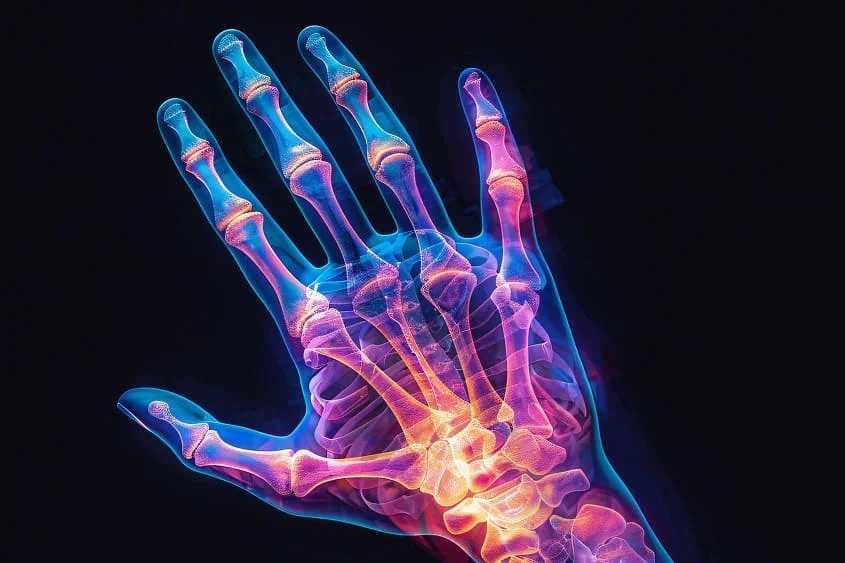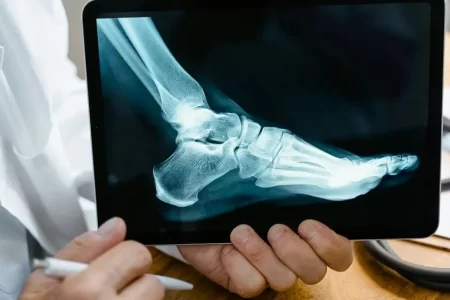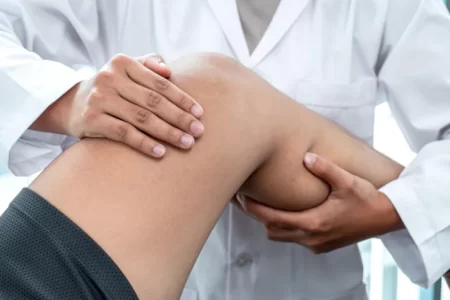Hand Arthritis: What Are the Top 3 Treatments?
- Updated on: Jan 3, 2025
- 5 min Read
- Published on Jan 2, 2025

Hand arthritis, a common condition affecting the joints in the hand, can cause significant pain, swelling, and stiffness, making everyday activities such as buttoning a shirt or holding a pen extremely challenging. With several types of arthritis, including osteoarthritis and rheumatoid arthritis, affecting the hands, it is essential to understand the top treatment options available to manage symptoms and improve quality of life. This article outlines the three most effective treatments for hand arthritis, each with its unique approach to pain relief and joint preservation.
1. Medications
When dealing with orthopedic for hands, medication is often the first line of defense against the pain and inflammation associated with hand arthritis. The type of medication recommended typically depends on the specific type of arthritis and its severity. Before starting any medication, it is essential to discuss potential side effects and drug interactions with a healthcare professional.
– Over-the-counter pain relievers: Nonsteroidal anti-inflammatory drugs (NSAIDs), such as ibuprofen and naproxen, are commonly used to manage mild to moderate pain and inflammation. They are available without a prescription and can be taken orally or applied topically.
– Acetaminophen: This pain reliever is an alternative for those who cannot take NSAIDs due to potential side effects or other medical conditions. It is important to follow the recommended dosage as acetaminophen can cause liver damage if taken in large quantities over time.
– Corticosteroids: These powerful anti-inflammatory drugs can be injected directly into the affected joint. Corticosteroid injections can provide temporary relief from pain and inflammation but may have side effects if used frequently.
– Disease-modifying antirheumatic drugs (DMARDs): For rheumatoid arthritis, which is an autoimmune disorder, DMARDs like methotrexate and hydroxychloroquine can help slow the progression of the disease by modifying the immune system’s response.
– Biologics: These are advanced medications that target specific parts of the immune system involved in the inflammatory process. They are often prescribed for severe rheumatoid arthritis and can significantly reduce inflammation and joint damage.
2. Physical Therapy and Exercise
Physical therapy and exercise play a crucial role in managing hand arthritis. They can help maintain or improve joint flexibility, strengthen the muscles surrounding the joints, and reduce pain.
– Heat and cold therapy: Applying heat to the affected hand can increase blood flow and reduce stiffness, while cold can alleviate swelling and pain.
– Range-of-motion exercises: These exercises involve gently moving the fingers and wrist through their full range of motion to maintain flexibility and reduce stiffness.
– Strengthening exercises: Building up the muscles can provide better support to the joints and reduce pain. Physical therapists often recommend exercises using light weights or resistance bands.
– Splints and braces: Custom-fitted or over-the-counter splints can provide support and reduce stress on the joints during certain activities. They are often worn at night to maintain hand alignment and prevent deformities.
– Assistive devices: Using tools such as jar openers, zipper pulls, and key holders can make daily tasks more manageable and reduce the strain on arthritic joints.
– Occupational therapy: Occupational therapists can suggest alternative ways to perform activities, provide education on joint protection techniques, and recommend the use of adaptive equipment to maintain independence and functionality.
3. Surgery
When conservative treatments fail to provide adequate relief, surgery may be considered as a last resort. Several surgical options are available for treating hand arthritis, depending on the severity and location of the condition. Each surgical option comes with its own set of risks and potential complications, so it is vital to discuss these with a surgeon to determine the most appropriate treatment plan.
– Joint fusion (arthrodesis): This procedure involves fusing the bones in the affected joint together to reduce pain and improve stability. It is often recommended for advanced arthritis in the fingers or thumb.
– Joint replacement (arthroplasty): In this surgery, the damaged joint is replaced with an artificial one. This can restore function and reduce pain, especially in the case of severe arthritis in the knuckles or base of the thumb.
– Joint debridement: For less severe cases, removing bone spurs or loose cartilage from the joint can provide pain relief and improve mobility.
– Tendon repair: For rheumatoid arthritis, surgery may involve repairing or reconstructing damaged tendons to improve hand function and reduce deformities.
– Synovectomy: This surgery involves removing the inflamed synovial tissue that lines the joints, which can help reduce swelling and pain in early-stage rheumatoid arthritis.
Complementary Treatments
While medication, physical therapy, and surgery are the mainstays of treatment for hand arthritis, several complementary approaches can also be beneficial:
– Topical treatments: Creams and ointments containing capsaicin, an ingredient found in chili peppers, can help reduce pain by desensitizing the nerve endings.
– Diet and supplements: Some studies suggest that certain dietary supplements, such as glucosamine and chondroitin, may help with arthritis symptoms. However, evidence is mixed, and it is always best to consult a doctor before starting any new supplement regimen.
– Alternative therapies: Acupuncture, massage, and yoga may offer some pain relief and improve overall well-being for those with arthritis.
– Weight loss: Maintaining a healthy weight can reduce stress on the joints, leading to less pain and increased mobility.
– Rest and activity modification: Balancing rest with activity is essential. Overuse of the affected hand can exacerbate symptoms, so it is crucial to listen to the body and avoid activities that cause pain.
– Support groups: Joining a support group can provide emotional support and practical advice from others living with arthritis.
Prevention Strategies
While it may not be possible to prevent arthritis entirely, certain lifestyle changes can help reduce the risk of developing the condition or slow its progression:
– Exercise regularly: Low-impact activities such as swimming and cycling can help maintain joint flexibility and strength without causing additional damage.
– Maintain a healthy weight: Excess body weight puts extra strain on joints, so keeping weight in a healthy range is vital.
– Practice good ergonomics: Using proper hand and wrist positioning during activities can reduce stress on joints.
– Use protective gear: For those engaging in high-risk sports or activities, wearing appropriate protective gear can help prevent injuries that may lead to arthritis.
– Quit smoking: Smoking has been linked to an increased risk of developing rheumatoid arthritis and can exacerbate symptoms.
Early Detection and Management
Early detection and management of hand arthritis are critical in preventing the condition from worsening. If you experience persistent pain, swelling, or stiffness in your hands, consult a doctor. They can diagnose the type of arthritis and develop a tailored treatment plan that may include a combination of medication, physical therapy, and lifestyle changes.
Regular check-ups with a healthcare professional can also help monitor the progression of the disease and adjust treatment plans as needed. It is essential to report any new symptoms or changes in existing ones, as these may indicate a need for additional interventions.
In conclusion, hand arthritis is a debilitating condition that affects millions of people worldwide. The top three treatments—medication, physical therapy, exercise, and surgery—each offer unique benefits and are best approached in a personalized manner based on the individual’s type and stage of arthritis. Complementary treatments and prevention strategies can also play a significant role in managing symptoms and improving quality of life. With the right combination of treatments and lifestyle adjustments, individuals with hand arthritis can maintain their independence and continue to participate in the activities they enjoy.












